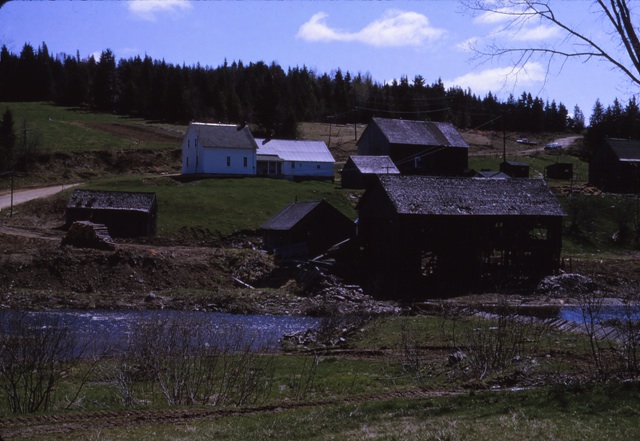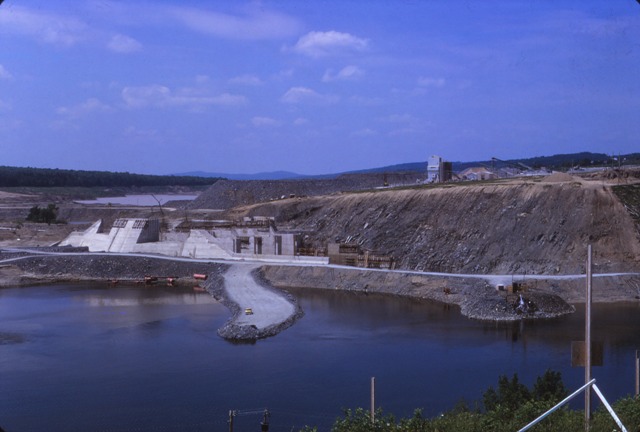Today, the Mactaquac Dam is a prominent part of the central New Brunswick landscape. Owned and operated by NB Power, the dam has the capacity to generate 653 megawatts of electricity – nearly twenty percent of New Brunswick’s total power demand! It’s a pretty impressive feat of structural engineering (or is it…), and a local point of pride in that we can get clean, efficient energy using only our surroundings.
While New Brunswick residents now take the dam for granted, it wasn’t always this way – in the late 1960s, the idea damming up the mighty Saint John River seemed highly invasive and almost unthinkable. There was also the issue of flooding: the construction of the dam displaced several thousand residents in the communities of Bear Island, Jewett’s Mill, and the surrounding farmlands.

Farmland near Jewett’s Mill, the town that was displaced by Dam Construction. Harry Grant, who took these photos, has a excellent book on the town’s history!
Here at the Fredericton Region Museum, we’ve been lucky enough to receive fifty -five photos that detail the dam’s construction between 1964 and 1968. Looking at them is a bit surreal, but they provide an important reminder that beneath the dam’s headpond are the remnants of an entire community of people who were literally forced to pack up and move elsewhere.
These photos were generously donated to the museum by Richard Grant, and were taken by his uncle, Harry Grant: a local historian whose family owned property in the former village of Jewett’s Mill. The photos show the dam in all stages of its developments, and also provide a rare insight into what it would look like to witness your own town – the place you grew up in – being torn out of the valley.
To view the full album, please check out the museum’s Facebook Page!





I’m from Bear Island and have studied every morsel of information of information, especially from my late father, who had an incredible memory, and with all due respect, I have never heard of anyone committing suicide before the dam. The only person I know who did commit suicide was Hazen Ingraham in 2006, I believe.
Years ago I met a woman in Fredericton who told me the very sad story of her parents who had a farm in that community and commmited suicide after they were driven from their home.